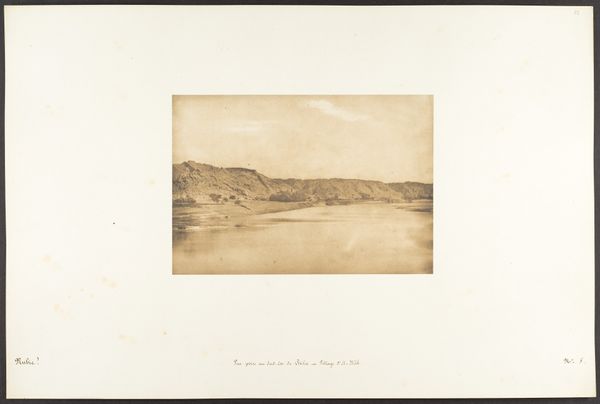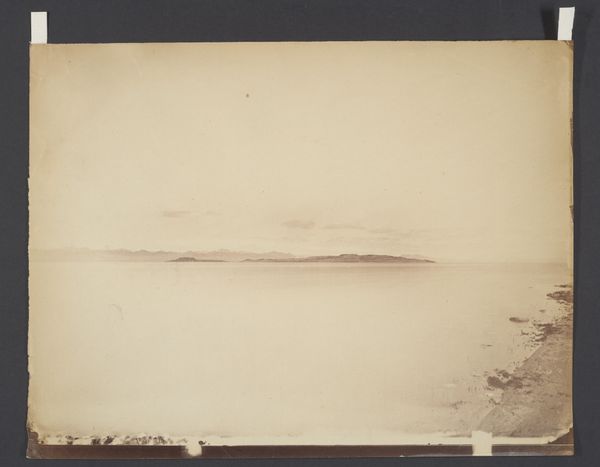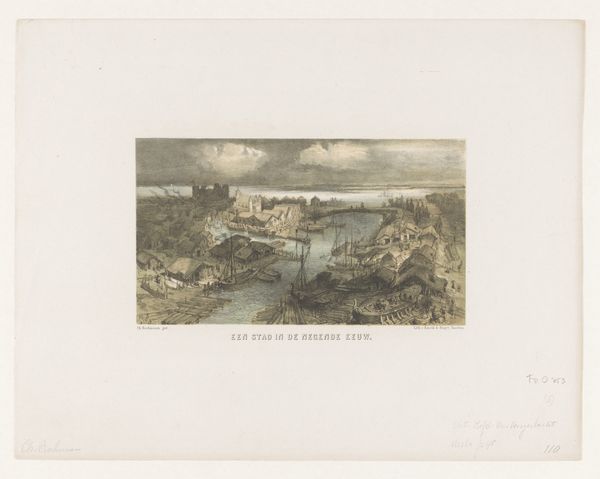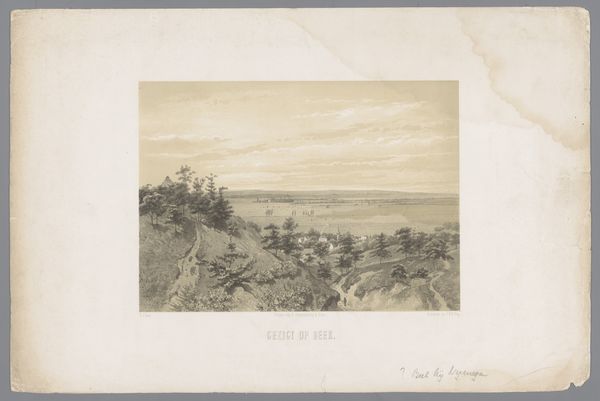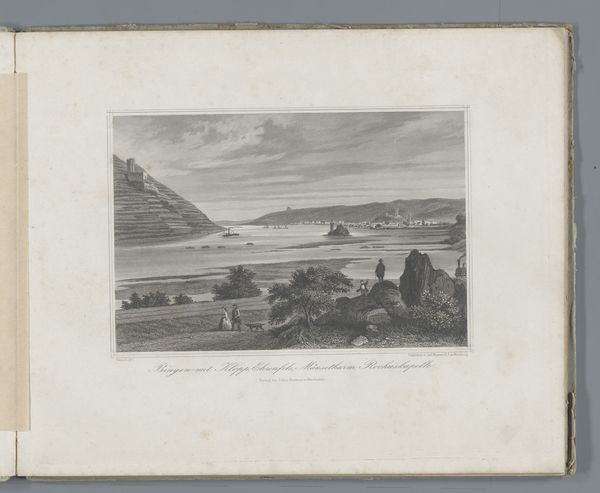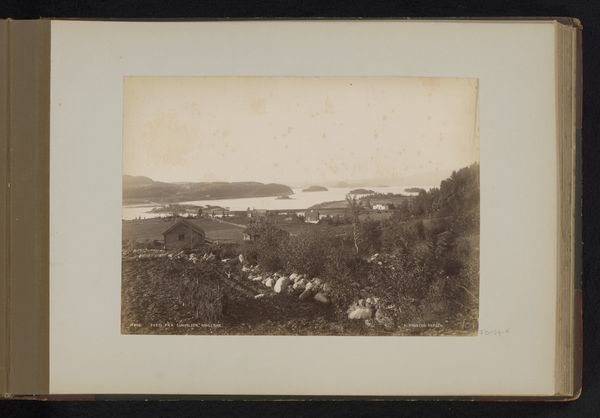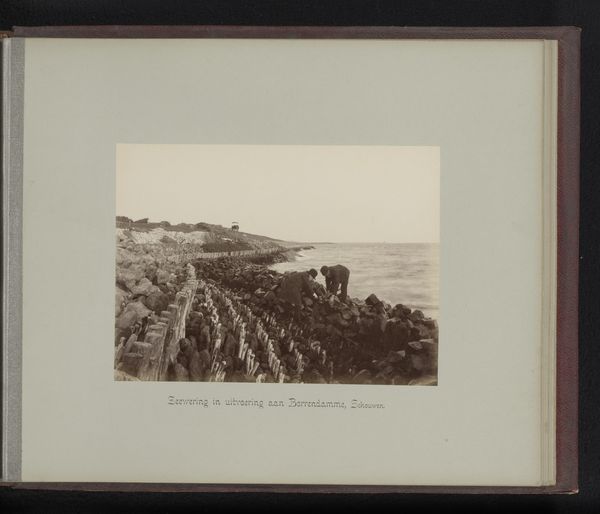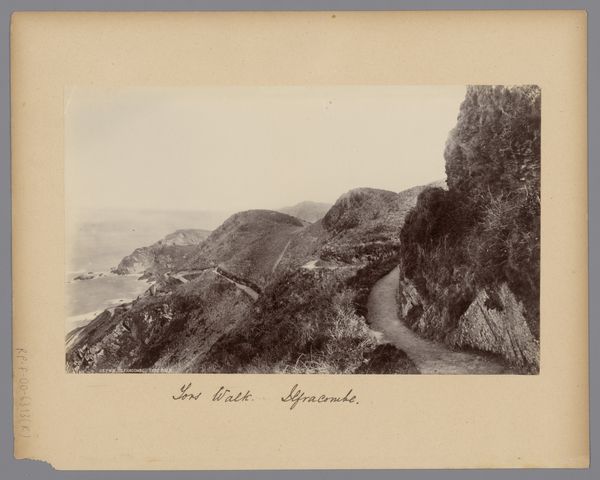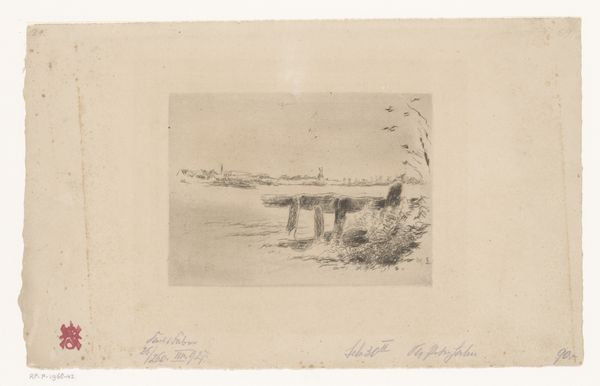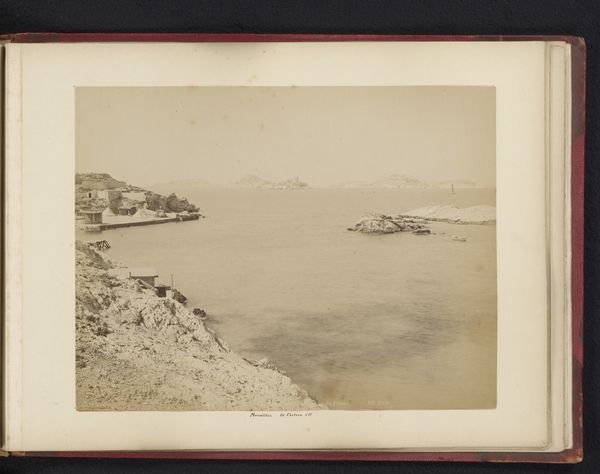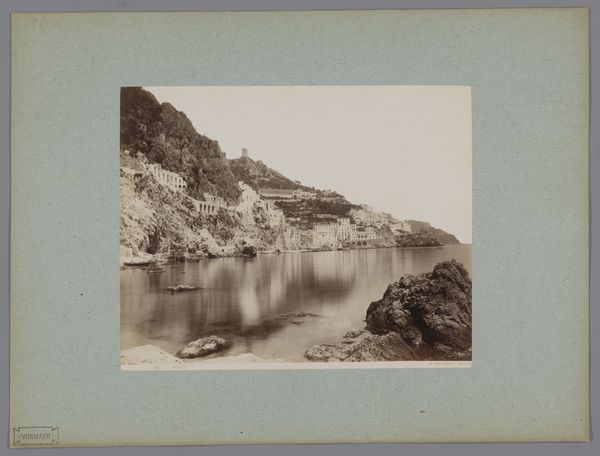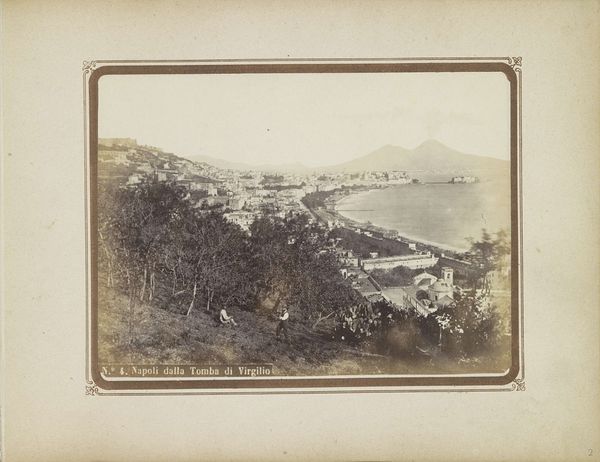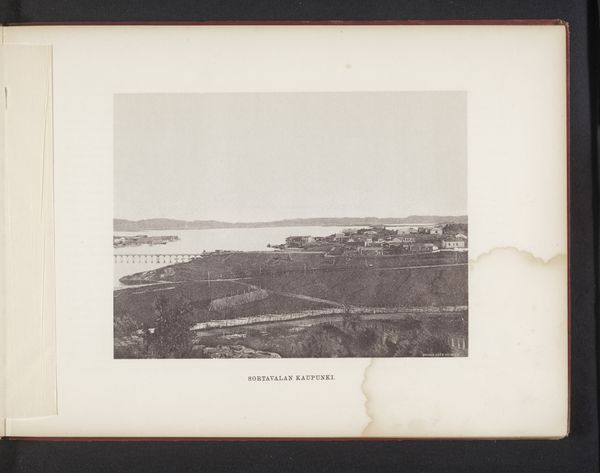
Treinspoor in Mozambique, mogelijk langs de oever van de Rio Incomati c. 1886s
0:00
0:00
photography, gelatin-silver-print
#
landscape
#
river
#
photography
#
orientalism
#
gelatin-silver-print
Dimensions: height 113 mm, width 168 mm
Copyright: Rijks Museum: Open Domain
Editor: Here we have a gelatin-silver print from around 1886, by Manuel Romão Pereira, titled "Treinspoor in Mozambique, mogelijk langs de oever van de Rio Incomati" or "Railway line in Mozambique, possibly along the banks of the Rio Incomati". It has a sort of quiet, wistful atmosphere. What do you see in this piece? Curator: It’s quiet, yes, but for me it also whispers of colonial ambition and exploitation. Consider the period: late 19th century. What does a railway signify in Mozambique at this time? Editor: Infrastructure, trade, economic development...? Curator: Exactly! But for whom? The Portuguese colonial power. This railway isn't just connecting points on a map; it's about extracting resources and solidifying control, altering the land. Look at the placement, next to the Rio Incomati. That river would have been its own pre-existing, natural trade route before this railway came through, correct? What do you think that suggests? Editor: That it isn’t just about building, but also controlling movement and commerce... effectively replacing an older system with a new one that benefits the colonizers. It completely changes trade for locals. Curator: Precisely. The ‘Orientalist’ style subtly reinforces the power dynamics. This image presents Mozambique as a landscape ripe for 'development,' obscuring the lived realities of the people affected. So, it’s crucial to look at landscape not as an objective vista, but as a space inscribed with power. Editor: That definitely changes how I see it. I was just thinking about the landscape, not what the railway *represents.* Thank you for making this print more visible to me. Curator: And thank you for pointing out the inherent beauty. The tension between the aesthetic appeal and the historical reality is precisely where the most meaningful dialogues begin.
Comments
No comments
Be the first to comment and join the conversation on the ultimate creative platform.
